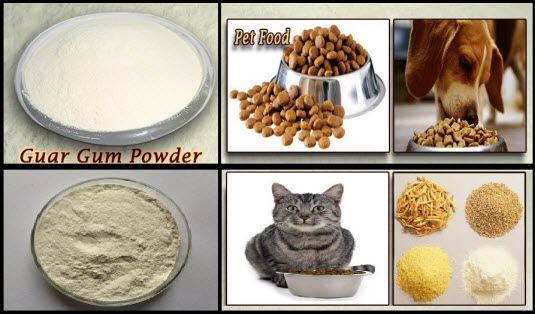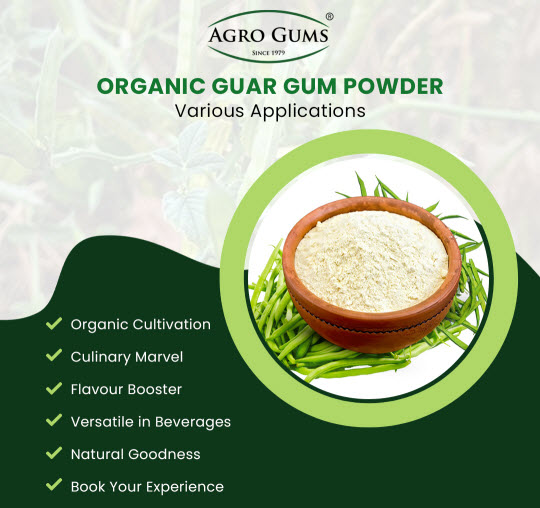Guar gum powder, derived from the guar plant's seeds, is a widely used food and industrial additive known for its thickening and stabilizing properties. However, its application extends beyond human consumption, finding significant utility in animal feed formulations.
Importance of Animal Feed Additives
Animal feed additives play a crucial role in modern livestock farming by enhancing the nutritional value, palatability, and overall quality of feed. These additives help in improving animal health, growth rates, and feed efficiency.
Role of Guar Gum Powder in Animal Feed
Guar gum powder serves as a multifunctional additive in animal feed formulations, contributing to its texture, consistency, and digestibility. Its soluble fiber content makes it a valuable component in promoting gastrointestinal health and nutrient absorption in animals.
Benefits of Guar Gum Powder
- Binding Agent: Guar gum powder acts as a binding agent, helping to form cohesive feed pellets and preventing dustiness during handling and transportation.
- Thickening Agent: Its thickening properties aid in maintaining the desired viscosity of feed suspensions, ensuring uniform distribution of nutrients and additives.
- Stabilizer: Guar gum powder stabilizes feed emulsions and suspensions, preventing phase separation and maintaining feed homogeneity.
- Enhances Digestibility: The soluble fiber present in guar gum powder promotes gut health by stimulating beneficial gut bacteria and enhancing nutrient absorption in animals.
Guar Gum Powder: Composition and Properties
Chemical Composition
Guar gum powder primarily consists of galactomannan, a complex carbohydrate composed of galactose and mannose units. Its high molecular weight and water-holding capacity contribute to its functional properties.
Functional Properties
The unique rheological properties of guar gum powder, such as viscosity, hydration capacity, and film-forming ability, make it a versatile additive in various industries, including animal feed.
Application of Guar Gum Powder in Animal Feed
Guar gum powder finds extensive application across different types of animal feed due to its diverse functional properties and benefits.
Binding Agent
In feed pelletization, guar gum powder serves as an effective binding agent, facilitating the formation of durable and compact pellets. This enhances feed handling, reduces wastage, and ensures uniform nutrient distribution.
Thickening Agent
By increasing the viscosity of feed suspensions, guar gum powder helps in maintaining the desired texture and consistency of feed, especially in liquid or semi-solid formulations. This ensures proper mixing of ingredients and prevents settling during storage.
Stabilizer
The stabilizing effect of guar gum powder prevents the separation of feed components, such as fats, oils, and water, thereby extending the shelf life of feed products. It also enhances the sensory attributes of feed by imparting a smooth and uniform texture.
Enhances Digestibility
The soluble fiber present in guar gum powder acts as a prebiotic, promoting the growth of beneficial gut bacteria and improving digestive health in animals. This results in enhanced nutrient utilization and reduced incidence of digestive disorders.

Effectiveness of Guar Gum Powder in Different Animals
Guar gum powder exhibits efficacy across various species, including cattle, poultry, and swine, albeit with some variations in dosage and application.
Cattle Feed
In cattle feed formulations, guar gum powder improves rumen function, enhances microbial activity, and reduces the incidence of acidosis. It also helps in the formation of well-compacted feed blocks, facilitating efficient feed intake and rumination.
Poultry Feed
In poultry diets, guar gum powder serves as a valuable source of soluble fiber, promoting intestinal health and nutrient absorption. It also improves the viscosity of intestinal contents, thereby reducing the risk of enteric diseases and improving feed efficiency.
Swine Feed
Swine diets supplemented with guar gum powder exhibit improved fecal consistency, reduced incidence of diarrhea, and enhanced nutrient digestibility. Its binding and thickening properties aid in the formation of cohesive feed pellets, leading to better feed intake and growth performance.
Dosage and Administration
The appropriate dosage of guar gum powder varies depending on factors such as animal species, age, and dietary requirements. It is typically incorporated into feed formulations at levels ranging from 0.1% to 1.0% on a dry matter basis.
Comparative Analysis with Other Feed Additives
Compared to other commonly used feed additives such as xanthan gum, carrageenan, and cellulose derivatives, guar gum powder offers similar or superior functional benefits at a relatively lower cost.
Regulatory Aspects and Safety Considerations
Guar gum powder used in animal feed must comply with regulatory standards and guidelines set by relevant regulatory authorities to ensure product safety and efficacy. It is essential to source guar gum powder from reputable suppliers who adhere to Good Manufacturing Practices (GMP) and maintain stringent quality control measures.

Challenges and Limitations
Despite its numerous benefits, the application of guar gum powder in animal feed is not without challenges and limitations. Factors such as variability in raw material quality, potential allergic reactions in sensitive animals, and dosage limitations necessitate careful consideration during formulation.
Future Prospects
Ongoing research and development efforts aim to explore innovative ways to enhance the efficacy and versatility of guar gum powder in animal feed applications. Advancements in processing techniques and formulation strategies may further optimize its performance and expand its scope of use.
Sustainability and Environmental Impact
Guar gum production involves minimal environmental impact, as the guar plant is drought-resistant and thrives in arid regions with low water availability. Additionally, its biodegradable nature and renewable source make it a sustainable choice for animal feed applications.
Conclusion
In conclusion, guar gum powder serves as a versatile and effective additive in animal feed formulations, offering numerous benefits in terms of texture, consistency, digestibility, and overall animal health. Its multifunctional properties make it an indispensable component in modern livestock nutrition, contributing to improved feed efficiency and production outcomes.
FAQs on Application of Guar Gum Powder in Animal Feed
By incorporating guar gum powder into animal feed formulations, farmers and producers can optimize feed quality, improve animal performance, and enhance overall productivity in a sustainable manner.
Web Design & Digital Marketing by Opal Infotech

